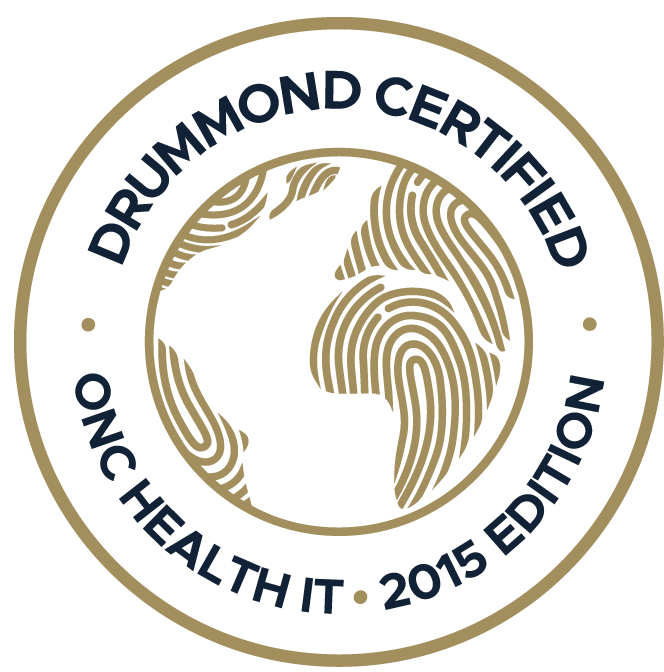Is your practice struggling to overcome operational bottlenecks despite trying everything from hiring extra staff to outsourcing certain tasks? A reliable healthcare practice management software might be the answer...

In the vast landscape of the US healthcare system, millions of healthcare providers play essential roles, yet only a tiny portion of them directly engage with patients. In the pursuit of delivering excellent patient care, one important group deserving of recognition is the office management staff. An office management staff plays a crucial role in maintaining a smooth workflow at any healthcare practice.
Their mission is to provide physicians with accurate patient information and optimize the patient experience. Simultaneously, they work to reduce risks and costs while maximizing revenue collection for services provided. These dedicated office management staff play a pivotal role in the healthcare ecosystem.
The day-to-day administrative tasks in a healthcare practice require focus, precision, and time management. Paper-based records are still the preferred method of recording, storing, and retrieving patient information in many healthcare practices. They may be simple and cost-effective, but they can create workflow inefficiencies that negatively affect physicians, patients, and the practice as a whole.
Here are the four things that could be slowing down your healthcare practice management, prompting a reevaluation of your approach to your healthcare practice management.
- Maintaining Paper Records
Few things are as time-consuming for a healthcare practice as the storage, upkeep, and retrieval of patient data on paper. Opting for paper records squanders valuable time, resources, and effort that could be better allocated toward providing optimal patient care. In the modern digital era, healthcare practices are moving away from outdated methods of data storage and retrieval.
Since the approval and implementation of Health Information Technology for Economic and Clinical Health Act (HITECH Act) legislation in 2009, the U.S. government has pushed for the adoption of EHR and supporting technology. Peper-based patient records are no longer useful in the modern and rapidly digitalizing world.
A study comparing paper-based patient records with Electronic Patient Records (EPR) found that EPR holds significant advantages over paper-based patient records regarding accuracy and quantity of procedure coding. This identifies a huge space for improvement when it comes to time management in any healthcare practice.
An efficient EHR system securely stores patient data while providing convenient, 24/7 access for both physicians and administrative staff.
- HIPAA Violations
Complying with rules and regulations put in place by HIPAA is essential for an interrupted workflow in healthcare practice. A single mistake violating the HIPPA rules and regulations can lead to a halt of the workflow in order to rectify the error and comply with the regulations in place.
Newer office management staff might need proper training to avoid HIPAA violations that could slow down the healthcare practice office management. Outsourcing practice management tasks to a reliable EHR service provider like Practice EHR ensures compliance with HIPAA rules and regulations.
- Over-complicated Process
Patient check-in is much more than just a simple doctor visit. Thinking about the patient check-in from the patient’s perspective can provide a clear picture of the process. The “check-in” may look something like this:
- Wait in line at the reception
- Provide insurance and identification cards
- Receive paperwork
- Sit in the waiting area
- Complete paperwork
This process might work well for the healthcare practice, but it is crucial always to seek space for improvement. The administrative staff should ask the patient questions that the doctor later asks them, such as, “To which pharmacy should we send your medication?” Every aspect of the patient lifecycle should be efficient, comprehensive, and simplified.
Patients are more satisfied with the services of the healthcare practice if it takes active steps to minimize inefficiencies and cut out steps that are not valuable to patients. Through optimization of its processes, the healthcare practice can boost the volume of patient visits, thus delivering enhanced care and fortifying the practice's overall health. An efficient workflow translates into substantial time savings for the practice, leading to a reduction in overtime expenses and decreased overhead costs associated with extended operating hours.
Switching to an electronic health record (EHR) and practice management system like Practice EHR streamlines the process for the patients, practitioners, as well as administrative staff. Ultimately, this results in quick and streamlined healthcare practice office management.
- Refusing to Embrace New Technology
Adhering to traditional methods consumes valuable time, resources, and effort within healthcare settings. Relying on paper-based storage saps the valuable time of healthcare providers that could otherwise be devoted to delivering optimal patient care. In the modern healthcare landscape, embracing digital solutions saves time and resources in addition to enhancing the efficiency and quality of patient care.
Healthcare practices are now shifting towards automation by outsourcing administrative tasks. This shift can significantly reduce the expenses tied to the administrative facets of healthcare operations. Furthermore, automation saves time and accelerates the completion of office management tasks.
Mitigating the Challenges in Healthcare Practice Office Management
Efficient office management in healthcare practices is crucial to prevent work overload and ensure a timely pace of patient care. As the owner of a healthcare practice, prioritizing the timely delivery of healthcare services on your part is essential for the convenience of your patients. To overcome the challenges associated with healthcare practice office management, it's essential to tackle the factors that contribute to its sluggish pace. Moving away from paper-based records of patient data is the first step toward efficient healthcare practice office management.
Embracing the latest technology is the next step, which requires staying up-to-date with the ever-evolving healthcare space. Transitioning from paper-based records to electronic health records (EHR) has now become unavoidable for the growth of any healthcare practice, aligning it with the evolving pace of the world.
Ensuring adherence to HIPAA rules and regulations is of paramount importance, necessitating comprehensive training for both medical and administrative staff. Likewise, simplifying the healthcare provision process by eliminating unnecessary steps can greatly streamline office management. A highly effective approach to achieve this goal is to outsource practice management and electronic health record (EHR) services.
Practice EHR - ONE Solution to Healthcare Office Management
Practice EHR is your ONE solution for all healthcare practice office management needs. Practice EHR offers innovative cloud-based software that streamlines your practice management tasks and provides convenient medical and administrative records access. Through its electronic health record (EHR) services, it simplifies access to health records for both practitioners and administrative staff.
By ensuring full compliance with HIPAA rules and regulations, Practice EHR mitigates the costs associated with fines and penalties. Furthermore, its intuitive design and user-friendly interface make staff onboarding a smoother and less challenging process, thereby pacing up healthcare practice office management effectively.
Request A Demo today and discover why Practice EHR stands as your only solution for efficient healthcare practice management!
Topics: Healthcare Office Management, EHR Solution, digital age, HIPAA Security, Medical Billing, Practice Automation, Dos and Don'ts, Healthcare Practice Office Management
RECENT POSTS



TOPICS
- EHR Solution (191)
- EHR (124)
- digital age (117)
- Patient Care (116)
- Medical Billing (110)
- Specialty-Specific EHR (110)
- Industry Update (97)
- Technology in Healthcare (84)
- EHR Features (79)
- Small Practice (77)
- Medical billing services (72)
- HIPAA Security (62)
- Integrated EHR (62)
- RCM (62)
- New Technology (44)
- Cloud-based EHR (43)
- Telemedicine (42)
- Healthcare Office Management (40)
- Practice EHR News (38)
- Kiosk (31)
- Revenue Cycle Management (28)
- AI Solutions (23)
- ePrescribing (21)
- AI Scribing (16)
- Best EHR Software (16)
- EMR (12)
- Practice Management Software (12)
- AI-powered Medical Billing (10)
- Client Favorites (10)
- Practice Automation (10)
- TeleVisit (10)
- The ONE (10)
- AI EHR (9)
- Switching to New EHR (9)
- MACRA/MIPS (8)
- Patient Portal (8)
- Urgent Care (8)
- AI Scribe (7)
- Best EHR Practice (7)
- EHR Integration (7)
- Psychiatry EHR (7)
- E-Prescribing (6)
- Product Updates (6)
- events (6)
- AI scanning (5)
- MIPS (5)
- Automated Health Tools (4)
- HIPAA (4)
- Insider (4)
- Internal Medicine EHR (4)
- MIPS Reporting (4)
- Mobile EHR (4)
- Orthopedics EHR (4)
- Podiatry (4)
- Podiatry EHR (4)
- Telehealth Platform (4)
- Chiropractic EHR (3)
- Digital Experiences (3)
- EHR Flaws (3)
- EHR Implementation (3)
- EHR for Chiropractors (3)
- EHR for Small Practices (3)
- Family Medicine EHR (3)
- Integrated Practice Management (3)
- Medical Practice Management Software (3)
- Patient Check-in Kiosk (3)
- PracticeEHR GO App (3)
- Regulatory Updates (3)
- Telehealth Platforms (3)
- Clearinghouse (2)
- Dermatology EHR (2)
- EHR Scheduling (2)
- Eligibility Verification in Medical Billing (2)
- Foot and Ankle Care (2)
- Foot and Ankle EHR (2)
- Health records 101 (2)
- Medical Coding Services (2)
- Medical Credentialing (2)
- Multilingual AI Scribe (2)
- Quality of Patient Care (2)
- Reporting Under MIPS (2)
- Risk and Liability in Medical Settings (2)
- What Works Clearinghouse (2)
- AI Scan (1)
- Bariatric EHR (1)
- Behavioral Health Practices (1)
- Billing Communication (1)
- Billing for Private Practices (1)
- Cardiology EHR (1)
- Cash Flow (1)
- Cashless Payments (1)
- Charting (1)
- Data Security (1)
- Dos and Don'ts (1)
- EHR Guides (1)
- EHR KPIs (1)
- EHR Questions to Ask (1)
- EHR Transition (1)
- EHR for Chronic Illness (1)
- EMR vs EHR Difference (1)
- ENT EHR (1)
- Endocrinology EHR (1)
- Family Medicine (1)
- Gastroenterology (1)
- Gastroenterology EHR (1)
- General Surgery EHR (1)
- Geriatric AI scribe (1)
- Geriatrics EHR (1)
- Guides (1)
- Healthcare Compliance Certification (1)
- Healthcare Practice Office Management (1)
- Help Center Videos (1)
- Insurance Reimbursement (1)
- KPI (1)
- Key Performance Indicators (1)
- Lab Processing (1)
- MACRA (1)
- Medical Billing Partner (1)
- Nephrology EHR (1)
- Neurology EHR (1)
- Pain Management EHR (1)
- Pediatrics EHR (1)
- Physical Therapy EHR (1)
- Practice Cash Flow (1)
- Practice Efficiency (1)
- Pulmonology EHR (1)
- Reconsider Your EHR (1)
- Simplify Practice Management (1)
- Staffing in Healthcare (1)
- Switch Medical Billing Providers (1)
- Urgent Care Medical Billing (1)
- Urology EHR (1)
- Voice-Activated AI Scribe (1)
- insurance claim denials (1)









